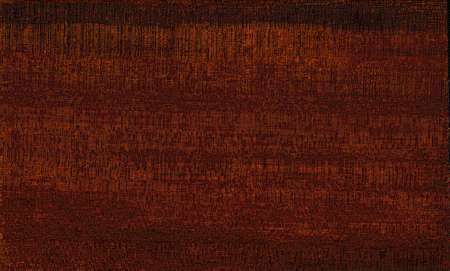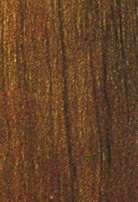 
Malas (Homalium foetidum)
Family: Flacourtiaceae
Common names: Aranga, Bansisian, Batu bagelang, Burma lancewood, Gia, Hate besi, Hate fina, Hia, Ied, Kalat-kalat, Karondang rante, Keruing rengkas, Kolaka, Malas, Malasata, Matandauw, Melmas, Merhai, Molaba, Momala, Mustigawe, Ngersaum, Padang, Petaling, Petaling padang, Puyut, Ropir, Samar, Sclimbar, Selimbar, Takaliu
Distributed in: Indonesia, Malaysia, Papua New Guinea, Philippines (Oceania and S.E. Asia)
Distribution overview: Burma to Indomalesia.
Common uses: Agricultural implements, Boat building (general), Boat building, Bridge construction, Construction, Decks, Flooring, Flooring: industrial heavy traffic, Furniture, Handles: general, Heavy construction, Joinery (external): ground contact, Joinery, Ladders, Light construction, Marine construction, Mine timbers, Paneling, Piling, Pulp/Paper products, Railroad ties, Sporting Goods, Turnery, Vehicle parts, Wharf construction
Environment profile: Status unknown in many of its growth areas
Colors: the heart isYellow, Yellow to golden-yellow to orangeand the sapwoodSame as heartwood, Yellow.The grain isStraight to deeply interlocked, the textureUniformand the lusterLow
Natural durability: Resistant to termites, Very durable
Odor: Sour odor
Kiln Schedules: UK=D US=T3D2/T3C1
Kiln Drying Rate: Rapid (<10 days for boards < 32 mm, to <30 days for boards >= 63 mm)
Drying Defects: Slight twist/warp, Splitting
Ease of Drying: Thick Stock Requires Care
Tree Identification: Bole/stem form is buttressed
Comments: General finishing qualities are rated as good
Blunting Effect: Slight
Boring: Good results
Carving: Fairly Easy to Very Easy
Cutting Resistance: Fairly Difficult to Very Difficult to saw
Gluing: Moderate gluing properties
Mortising: Moderately easy to mortise
Moulding: Moulding ease is moderate
Movement in Service: Moulding ease is moderate
Nailing: Pre-boring required, Tends to split during nailing
Planing: Planes well, to a good finish
Resistance to Impregnation: Sapwood is permeable
Response to hand tools: Responds Readily
Routing recessing: Fairly Easy to Very Easy
Sanding: Good sanding finish
Turning: Good results
Polishing: Fair to Good;
- Numerical data Metric
- Numerical data English
- Strength properties
- References
 |
 |
 |
 |
| Item |
Green |
Dry |
Metric |
| Specific Gravity |
|
|
|
| Density |
|
817 |
kg/m3 |
| Bending Strength |
908 |
1454 |
kg/cm2 |
| Crushing Strength |
458 |
708 |
kg/cm2 |
| Hardness |
|
752 |
kg |
| Impact Strength |
|
|
cm |
| Shearing Strength |
|
154 |
kg/cm2 |
| Stiffness |
148 |
177 |
1000 kg/cm2 |
| Tangential Shrinkage |
|
|
% |
| Radial Shrinkage |
4 |
|
% |
| Weight |
817 |
657 |
kg/m3 |
| Maximum Load |
|
|
cm-kg/cm3 |
| Toughness |
|
|
cm-kg |
| Static Bending |
|
|
kg/cm2 |
|
 |  |  |  | | Item | Green | Dry | English | | Bending Strength | 12926 | 20692 | psi | | Density | | 51 | lbs/ft3 | | Hardness | | 1658 | lbs | | Maximum Crushing Strength | 6520 | 10074 | psi | | Shearing Strength | | 2200 | psi | | Stiffness | 2119 | 2531 | 1000 psi | | Weight | 51 | 41 | lbs/ft3 | | Radial Shrinkage | 4 | | % | | Tangential Shrinkage | 8 | | % | |
Density (dry weight) = 53-60 lbs/cu. ft. 0
Density (dry weight) = 46-52 lbs/cu. ft. 1
Max. crushing strength = high
Modulus of Elasticity (stiffness) = high
Bending strength (MOR) = high
Shrinkage, Radial = moderate
Shrinkage, Tangential = moderate
Shearing strength (parallel to grain) = medium
Shrinkage, Tangential = large
Shrinkage, Tangential = fairly large
Shrinkage, Radial = small
Hardness (side grain) = medium
Density (dry weight) = 61-67 lbs/cu. ft.
Shrinkage, Tangential = small
Shrinkage, Radial = fairly large
Shearing strength (parallel to grain) = very high
Modulus of Elasticity (stiffness) = medium
Density = high
Compression strength (parallel to grain) = very high
Bending strength (MOR) = very high
Bolza, E., Kloot, N.H.,1976,The Mechanical Properties of 81 New Guinea Timbers,C.S.I.R.O. Div. Building Res. Tec.Paper (2nd series) 11Bolza, E.,1975,Properties and Uses of 175 Timber Species from Papua New Guinea and West,Irian,C.S.I.R.O. Div. Building Research Report,no.34Brown, W.H.,1978,Timbers of the World, No. 8 Australasia,TRADA, Red Booklet SeriesChudnoff, M.,1984,Tropical Timbers of the World,U.S.A. Department of Agriculture, Forest Service, Forest Products,Laboratory, Madison.Da Costa, E.W.B., Osborne, L.D.,1967,Comparative decay resistance of 26 New Guinea timber species in,accelerated laboratory tests,Comm. Forestry Review 46(1) pp63-74Eddowes, P. J. 1961. Commercial Timbers of Papua New Guinea - Their Properties and Uses. Office of Forests, Department of Primary Industry, Forest Products Research Center, Papua New Guinea.Eddowes, P.J.,1977,Commercial Timbers of Papua New Guinea: Their Properties and Uses,Hebano Press, Port Moresby, Papua New GuineaGriffioen, K.,1967,Colloque sur le role des recherches techniques dans le developpement de,l'emploi des bois tropicaux en Europe,C.T.F.T.Keating, W.G., Bolza, E.,1982,Characteristics properties and uses of timbers. South East Asia, Northern,Australia and the Pacific,C.S.I.R.O. Div. Chemical Technology,Inkata Press,1Papua New Guinea Department of Forests,1972,New Horizons,Forestry in Papua New Guinea,Jacaranda Press PTY Ltd, BrisbanePapua New Guinea,1982,Papua New Guinea timbers - technical data,Forest Industries Council P.N.G.Tamolang, F.N., Martawijaya, A., Kartasujana, I., Kadir, K., Parwira, S.,1992,Indonesian Wood Atlas Volume II,Department of Forestry, Agency for Forestry Research and Development,,Bogor-IndonesiaTsumoto, T., Karasawa, H.,1975,The Properties of Tropical Woods 21,Government of Japan Forest Experimental Station Bulletin,No.227Wallis, N.K. 1956. Australian Timber Handbook. Sponsored by The Timber Development Association of Australia. Angus & Robertson, Ltd., 89 Castlereagh Street, Sydney, Australia.WCMC. 1992. Conservation Status Listing: Trees and Timbers of the World. World Conservation Monitoring Center (WCMC, Plants Program, 219 Huntingdon Road, Cambridge, CB3 ODL, United Kingdom.
|









